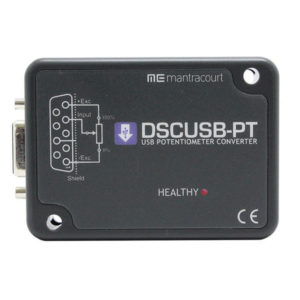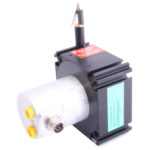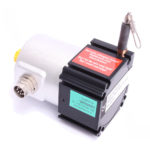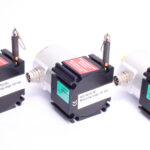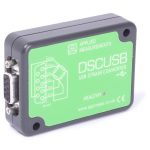At a Glance
- Simple USB Connection
- No external power supply required
- Data Logging via Toolkit Software
- ASCII Protocol
- High Speed: 100 Readings/Second max.
- Free Toolkit Software Included
- High Stability with 1 part in 200,000 resolution
- Converts a Potentiometer Output to a Digital Input Direct to Your PC
- Easy to Use – Simply Plug & Play
- Cost Saving – No Need for Additional Amplifiers
- Works With Any Potentiometer-Based Sensors
- Fast Data Analysis – With Direct USB Connection
- View the Results Instantly with the FREE Downloadable Software
Description
The DSCUSB-PT USB potentiometer interface is a single-channel USB interface designed to convert potentiometer sensor outputs into a digital USB serial input. It is very compact and housed in a rugged plastic case rated to IP50 making it suitable for all indoor environments. It is ideal to use with our range of Micro-Epsilon draw-wire sensors of which Applied Measurements are an approved distributor.
The DSCUSB-PT potentiometer interface plugs directly into your PC and requires no additional power supplies, as it derives all its power requirements directly from the USB bus.
The potentiometer digitiser interface utilises the ASCII protocol and features high resolution to 1 in 200,000, 7-point sensor linearisation and high speed measurements at rates up to 100 readings/second.
PC-based calibration of the USB potentiometer interface is very easy to perform using the DSCUSB-PT Toolkit software which is supplied free of charge. The potentiometer signal can be read directly from the sensor or input numerically using figures from the sensor calibration certificate. Other features includes linearization and temperature compensation.
The free Toolkit software also features a data logging function that allows the user to log data to a spreadsheet compatible CSV file at rated up to 100Hz.
Below you can download the DSCUSB Toolkit software which allows calibration and configuration of the DSCUSB-PT potentiometer interface module along with monitoring and data logging. There is also a link to download the DSCLog24 which provides up to 24 channels of live monitoring and data logging, allowing multiple DSCUSB-PT modules to be used simultaneously.
If you require a strain gauge signal to be converted to USB, try our DSCUSB USB load cell interface instead.
Technical Specifications
| Parameter | Min | Typical | Max | Units |
|---|---|---|---|---|
| Potentiometer Measurement | 3-wire | |||
| Potentiometer Excitation Voltage | 5 | Vdc | ||
| Potentiometer Drive Capability | 500 | Ohms | ||
| Offset Temperature Stability | 1 | 4 | ppm/˚C | |
| Gain Temperature Stability | 3 | 5 | ppm/˚C | |
| Non Linearity before Linearization | 5 | 25 | ppm of FR | |
| Internal Resolution | 24 million | Counts/divs | ||
| Noise Free Resolution at 1 Sample Per Second | 500,000 | Counts/divs | ||
| Power Supply Voltage (USB) | 4.5 | 5 | 5.5 | Vdc |
| Power Supply Current (500 Ohm Potentiometer) | 68 | 75 | mA | |
| Operating Temperature Range | -40 | +85 | ˚C | |
| Storage Temperature | -40 | +85 | ˚C | |
| Humidity | 0 | 95 | %RH | |
| Protection | IP50 | |||
| Dimensions - Cased Version | 70.5 x 51 x 20mm excluding 9-way ‘D’ type socket connector. 74.5 x 51 x 20mm including connector. | |||
Product Dimensions

DSCUSB-PT Toolkit Software
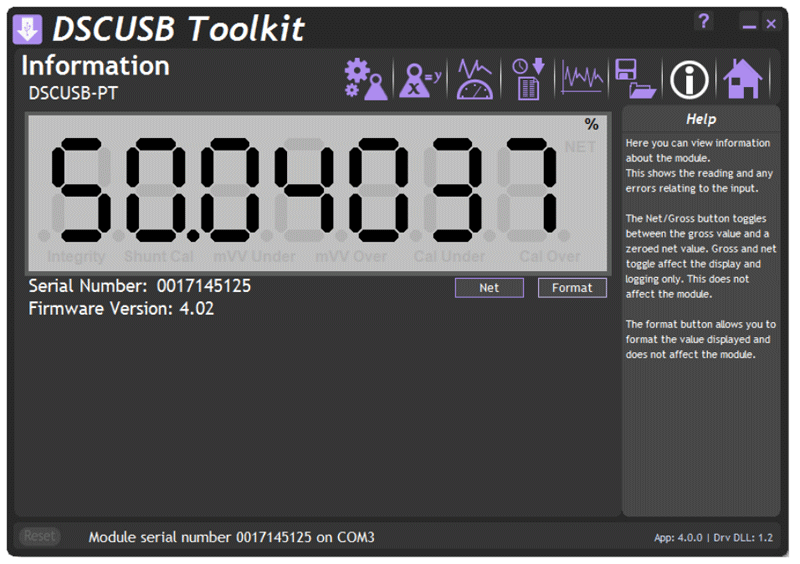
If the module has been allocated engineering units these may be displayed in the upper right of the LCD display.
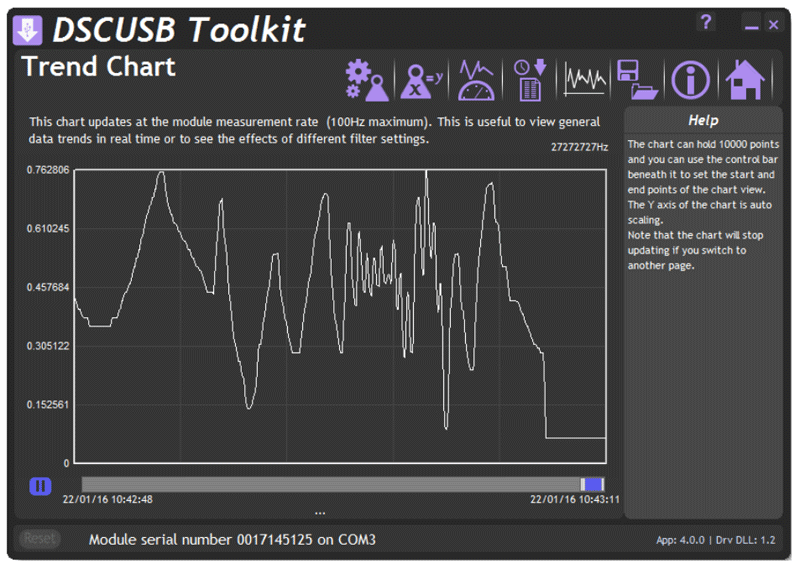
trend chart. You can see the current rate at which data is added at the top right of the chart.
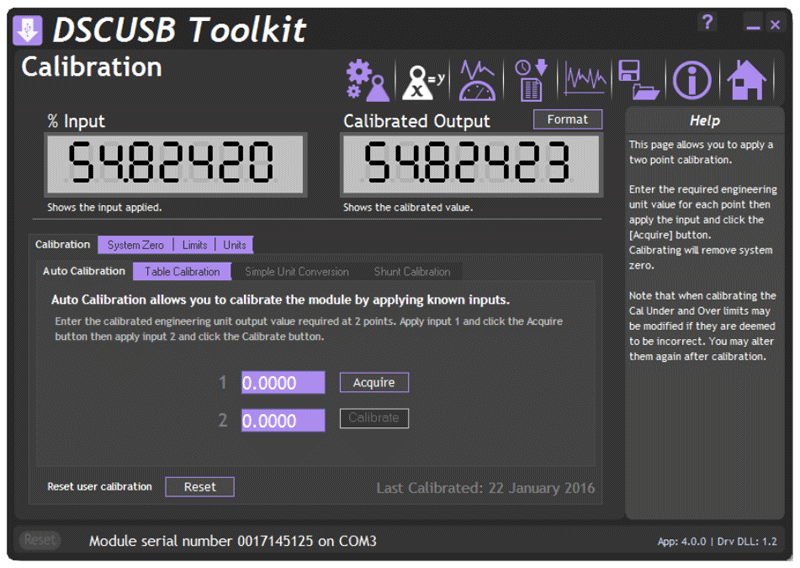
description.

